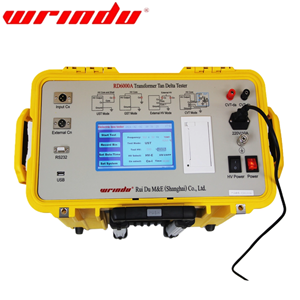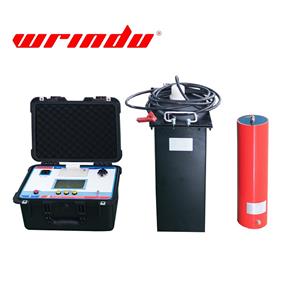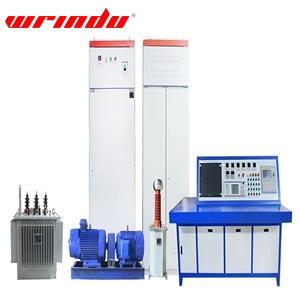Why is transformer testing so important?
Relationship between kinds of transformer testing
There are many testings for transformers. Each testing has its own unique role. They are interrelated and can help fully understand the performance, quality and safety of the transformer. The following is a brief description of each test and the relationship between them:
DC Resistance Test
For its function, the DC resistance test is mainly used to measure the resistance of transformer windings. This test can help detect problems such as loose connections, short circuits, and open circuits. It is typically performed in a low-temperature environment using a DC current.
For its relationship between other tests, the DC resistance test results can be used as a reference for tests such as no-load loss, load loss, and insulation resistance. A high DC resistance may mean that there is a short circuit in the winding or poor contact between the windings.
Ratio and Vector Group Test
For its function, the turns ratio test is used to verify that a transformer's transformation ratio meets design requirements. The ratio is calculated by inputting a standard voltage and measuring the output voltage. The transformer's grouping determines the connection method for each winding (e.g., Y-Y, D-Y, D-D, etc.), which influences factors such as phase sequence and grounding method.
For its relationship between other tests, the turns ratio test directly relates to whether the transformer's output voltage meets the design specifications. If the turns ratio is abnormal, it could affect the voltage level during load operation. The turns ratio and vector group test are typically performed after the winding connections and wiring have been completed.
No-Load Loss Test
For its function, the no-load loss test measures the transformer's losses when there is no load. Typically, only iron losses (core losses) and a small amount of copper losses are present. This test is used to assess the transformer's efficiency when operating at no load.
For its relationship, no-load loss is a key indicator of transformer design and materials, directly affecting the transformer's operating efficiency and energy consumption. DC resistance testing and load loss testing also help assess whether the transformer consumes excessive energy when no-load.
Load Loss Test
The load loss test is performed on the transformer under load to measure its losses, primarily copper losses (losses caused by current passing through the windings). This test helps assess the efficiency of the transformer under normal operating loads.
For its relationship between other tests, the load loss test is closely related to the DC resistance test. Because the greater the DC resistance, the higher the load loss. Load loss can also reflect whether the design and materials of the transformer are reasonable and whether it will cause excessive heat loss.
AC High-Voltage Test
As its function, the AC withstand voltage test verifies whether the transformer's insulation system can withstand a certain high voltage. The purpose is to check whether the transformer can operate normally under abnormal voltage without breakdown or short circuit. The test voltage is generally 1.5 times or higher of the design withstand voltage.
In addition, this test can detect the insulation quality of the transformer. If problems are found in the DC resistance test, inductive voltage test, or load test, it may show that the insulation layer is defective.
Induced Overvoltage Test
For its function, the induced voltage withstand test is used to check whether the transformer can withstand abnormal conditions such as overvoltage and overcurrent in its actual working environment. This test usually simulates overvoltage conditions by applying high voltage or high current for a short period of time to check whether the transformer can withstand them normally.
For its relationship, the induction withstand voltage test is similar to the AC withstand voltage test in that both tests insulation, but the induction withstand voltage test is more focused on stability under specific operating conditions. If a problem occurs during this test, it may cause insulation problems in the long-term operation of the transformer.
Temperature Rise Test
For its function, the temperature rise test is used to detect the temperature rise of the transformer under load conditions to confirm whether it meets the standards. Excessive temperatures may cause aging of the windings and insulation materials, shortening the life of the transformer. And to remeber, emperature rise test is not always done, but sometimes it is necessary.
For its relationship, load loss is directly related to temperature rise. The greater the load, the greater the copper loss, resulting in higher temperature.
Conclusion
We should remember that transformer testing is crucial in power systems, mainly because transformers are core equipment in power transmission and distribution. It can guarantee their safe and reliable operation. By promptly identifying potential problems and taking corrective measures, you can extend equipment life, reduce maintenance costs, and ensure the reliability of power supply.
For some necessary tests, generally speaking, transformers must undergo DC resistance testing, ratio group testing, no-load loss and load loss testing, and AC withstand voltage testing. At the same time, induction withstand voltage testing is generally also required if conditions permit.

As the above picture, this comprehensive transformer tester from Ruidu company can be used to perform tests such as DC resistance testing, turns ratio group testing, no-load loss testing, load loss testing, AC withstand voltage testing, and induction withstand voltage testing on power transformers with voltage levels of 10kV, 35kV, 110kV, and 220kV, and capacities of 10kVA to 10,000kVA. We can customize the transformer tester to meet your specific needs.
If you do not need to do all these tests, you can buy some specific testing equipments focus on one or two tests of transformers, please contact us!
Last but not least, if you want know more about transformer tests, you can click the following links:




